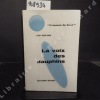4 books for « szilard leo »Edit
-
Topics
Anticipation (1)
Physics (3)
Science fiction (1)
Short stories (1)
-
Countries
Denmark (3)
France (1)
Über die Entropieverminderung in einem thermodynamischen System bei Eingriffen intelligenter Wesen. [On the Decrease of Entropy in a Thermodynamic System by the Invention of intelligent Beings). - [""THE EARLIEST KNOWN PAPER IN WHAT BECAME THE FIELD OF ""INFORMATION THEORY""""]
Berlin, Julius Springer, 1929. 8vo. Bound in contemporary halfcloth. In ""Zeitschrift für Physik"", Vol. 53, 1929. Entire volume offered. Library stamp to title page, otherwise fine and clean. Pp. 840-856. [Entire volume: VII,(1),889,(1) pp.]
First edition of the landmark paper in which Szilard solved the puzzle of Maxwell's demon and discovered a theoretical model that serves both as a heat engine and information engine, establishing the connection between entropy and information. ""This work is now considered to be the earliest known paper in what became the field of ""information theory"". (Lanouette, Genius in the Shadows: A Biography of Leo Szilard, the Man Behind the Bomb). In the philosophy of thermal and statistical physics, Maxwell's demon is a thought experiment created by Maxwell to show that the Second Law of Thermodynamics has only a statistical certainty. ""Maxwell's demon was first mentioned in a letter written to Tait in 1867. Maxwell was one amongst a number of researchers in the developing field of thermodynamics who was interested in seeking an understanding of thermal phenomena in terms of an underlying atomic physics. However, unlike Boltzmann and Clausius, who were attempting to prove the law of entropy increase from such atomic physics, Maxwell had realised that if thermodynamics was ultimately grounded in atomic theory, then the second law of thermodynamics could have only a statistical validity."" (SEP). Szilard (In the present paper) attempted to investigate this special case of intelligently operated devices by considering a box containing only a single molecule. He argued that in order to achieve the entropy reduction, the intelligent being must acquire knowledge of which fluctuation occurs and so must perform a measurement. The second law would not be threatened provided there was a compensating cost to performing this measurement, regardless of the character of the intelligent being.""Claude E. Shannon, who spelled out detailed relationship between information and entropy in the 1950s, also later acknowledged that Szilard's paper had proposed the basis for his new field study."" (Lanouette, Genius in the Shadows: A Biography of Leo Szilard, the Man Behind the Bomb).
Über die Entropieverminderung in einem thermodynamischen System bei Eingriffen intelligenter Wesen. [On the Decrease of Entropy in a Thermodynamic System by the Invention of intelligent Beings). - [MAXWELL'S DEMON]
Berlin, Julius Springer, 1929. 8vo. Contem. hcloth. In ""Zeitschrift für Physik"", Vol. 53. VII,(1),889,(1) pp. The whole volume offered. Szilard's paper: pp. 840-856. Ex-lirbrary stamp to front free end-paper, otherwise no stamps or other markings. A fine copy.
First edition of the important paper in which Szilard solved the puzzle of Maxwell's demon and discover a theoretical model that serves both as a heat engine and an information engine, eatablishing the connection between entropy and information. Szilard was the first to stress that any manipulator of molecules would have to rely on measurement and memory. If one assumed that the demon could perform such operations without causing any changes in the system, one would by that very assumption deny the second law of thermodynamics, which requires equivalent compensations for all decreases in entropy. Szilard therefore proposed that whatever negative entropy Maxwell's demon might be able to create should be considered as compensated by an equal entropy increase due to the measurements the demon had to make. In essence, Szilard made Maxwell's doorkeeper mortal-no longer granting this tiny intelligence the ability to 'see' molecules without actually seeing them, i.e., without the sensory exchanges of energy that all other existences require. Szilard took this step for the sake of a grander vision, the dream that the adoption of his principle would lead to the discovery of a more general law of entropy in which there would be a completely universal relation for all measurements. Information theory has brought that vision to reality.
Über die Entropieverminderung in einem thermodynamischen System bei Eingriffen intelligenter Wesen. [On the Decrease of Entrophy in a Thermodynamic System by the invention of intelligent Beings). - [MAXWELL'S DEMON AND THE CONNECTION BETWEEN ENTROPY AND INFORMATION]
Berlin, Julius Springer, 1929. 8vo. Contemp. hcloth. Some wear to edges and spine. A stamp on title-page. In ""Zeitschrift für Physik"", vol. 53. The whole volume offered. VII,(1),889,(1) pp. Szilard's paper: pp. 840-856.
First edition of the important paper in which Szilard solved the puzzle of Maxwell's demon and discovered a theoretical model that serves both as a heat engine and an information engine, establishing the connection between entropy and information.Szilard was the first to stress that any manipulator of molecules would have to rely on measurement and memory. If one assumed that the demon could perform such operations without causing any changes in the system, one would by that very assumption deny the second law of thermodynamics, which requires equivalent compensations for all decreases in entropy. Szilard therefore proposed that whatever negative entropy Maxwell's demon might be able to create should be considered as compensated by an equal entropy increase due to the measurements the demon had to make. In essence, Szilard made Maxwell's doorkeeper mortal - no longer granting this tiny intelligence the ability to 'see' molecules without actually seeing them, i.e., without the sensory exchanges of energy that all other existences require. Szilard took this step for the sake of a grander vision, the dream that the adoption of his principle would lead to the discovery of a more general law of entropy in which there would be a completely universal relation for all measurements. Information theory has brought that vision to reality.
SZILARD, Léo - Traduit de l'américain par Philippe Chardeyron et Claude Saunier
Reference : 108934
(1962)
Les voix des dauphins et autres histoires
1962 Editions Denoël, Collection "Présence du futur" N°55 - 1962 - In-12, broché - 174 p.
Bon état malgré quelques frottements sur la couverture
 Write to the booksellers
Write to the booksellers









